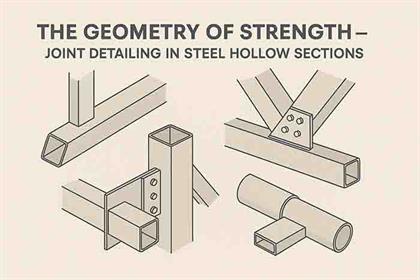
When it comes to building a boundary wall, most people focus on the visible part — bricks, height, paint, maybe a fancy gate. But what actually keeps that wall standing strong for years? It’s the foundation. And this is where things often go wrong.
Let’s walk through some of the most common missteps that can lead to cracks, tilting, or even total collapse — and how you can avoid them.
1. Skipping Soil Testing? That’s a Big Risk
Think of your foundation like shoes. Would you wear slippers on a rocky mountain trail? Of course not. But that's what you’re doing when you lay a foundation without knowing the soil type. Clay, loose sand, or black cotton soil all behave differently.
Real story: A builder in Nagpur skipped soil testing, laid a shallow foundation on expansive soil, and six months later — cracks everywhere. The wall leaned like it was tired of standing.
Fix: Always test your soil before pouring concrete. It’s a small upfront cost that saves big later.
2. Going Too Shallow
Shortcuts with depth may feel like saving money — until the wall starts sinking. Boundary walls usually need at least 1.5 to 2 feet of depth, but this varies based on soil and wall height.
Ask this: “Is your wall taller than 5 feet? Then why’s the footing only 12 inches deep?”
Tip: Don’t guess. Use basic load calculations or consult an engineer, even for small walls.
3. Ignoring Water Drainage
Water is sneaky. It seeps in, weakens the foundation, and then blames gravity when your wall tips over. If you don’t plan for proper drainage, you’re inviting long-term trouble.
Analogy: A foundation without drainage is like a house with no roof during monsoon — it might hold up for a bit, but not forever.
What to do: Use a layer of gravel, create gentle slopes around the wall, and avoid water pooling near the base.
4. Weak Concrete Mix
Some folks think “concrete is concrete.” But using a weak or inconsistent mix is like building with half-cooked cement. That means premature cracks, weak bonding, and poor strength.
Fix: Stick to M15 or M20 grade for normal walls. Mix ratios matter — don’t let the mason “eyeball” it.
5. No Curing = Fast Cracks
Not curing the foundation properly is like skipping sleep after a workout. The strength won’t build, and the results will show — in the worst way.
Insight: Foundations need curing for at least 7–10 days. Otherwise, your wall’s strength will drop by 30–40%, especially in hot regions.
6. Rebar Placement Gone Wrong
Reinforcement bars aren’t just for show. They need to be correctly placed, properly spaced, and covered to prevent rust.
Mistake alert: Many masons push the rebar too close to the surface. Once water hits it, rust forms, and the steel expands, cracking the concrete from the inside.
Tip: Ensure a clear cover of at least 25 mm between rebar and the outer edge.
7. Not Following Local Norms or Setbacks
You can’t just build a wall anywhere on your plot. Every municipality has zoning rules. Skip those, and your wall might get demolished.
Check: Does your local authority require a 1-meter setback? Are you allowed 6 feet height? Better to ask now than pay fines later.
Final Thought:
Building a strong boundary wall isn’t just about materials. It’s about smart choices, planning, and respect for the basics. Foundations may be underground, but the mistakes show up above ground — loud and clear.















